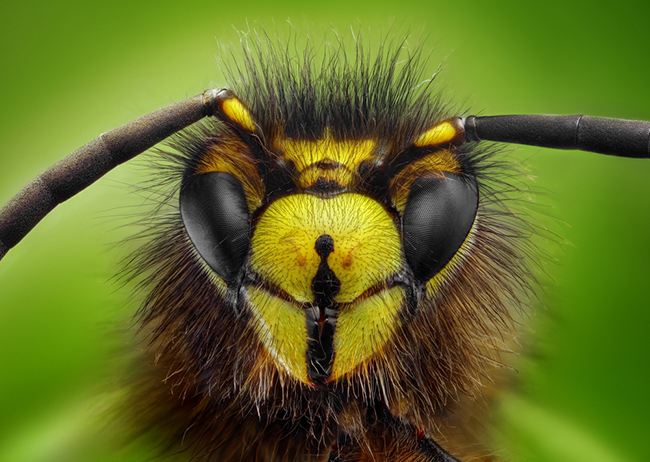What You Need To Know About Wasps

Did you know that there are over 100,000 different species of wasp? Wasps can be classified in two broad categories: solitary wasps and social wasps. The wasp is found in all the countries in the world, on every continent with the exception of the Polar Regions.
Wasps live in colonies that form self-contained communities, each following a caste order of queens, males (drones) and workers. A nest may contain 5,000 individual wasps. By winter, however, all the workers and male wasps die, leaving only the queen, who survives the cold during hibernation. The queen is the only fertile female in a wasp nest and can lay eggs while the rest of the sterile females become workers and take care of the eggs.
The life cycle of the wasp is complex and shows how quickly nests can form and grow to the size that they do. The queen wasp begins the hunt for a nesting site when she wakes from hibernation in mid April. The queen starts the nest off by attaching the first part of the nest to something sturdy; normally in lofts and sheds this will be a roof rafter or some other part of the roof structure. Following this she hatches her young alone whilst worker bees continue to build the nest.
How Do I Know If I Have A Wasp Nest?
Each nest will produce around 1000-1500 new queens. Wasps will nest in awkward places in a property, which can sometimes make their nests difficult to locate. Wasps frequently build their nests indoors, both in attics and inside houses. Most of the time nests are built in lofts, sheds, gardens and garages but they have been known to nest in more active areas of a property. A dry warm area is preferred by the wasps as the warmth increases wasp activity they will however nest in the ground.
Are you experiencing a high volume of wasps in your garden or property? Wasps make their nests from chewed wood pulp and saliva, giving them distinctive papery walls, they can reach the size of a football if left untreated but can increase if the weather remains warm! However they are not all bad and in the spring and summer months worker wasps help to control other insect pests in the garden, without you realising it.
They scavenge for fly and caterpillar larvae in particular. Also, whilst not being as efficient as bees, wasps do pollinate plants. It is in the autumn that they become drowsy and aggressive as the queen finishes her egg laying cycle and the worker bees have less work to do! They are fiercely territorial and will defend their nests aggressively.
Wasp stings are not uncommon when you first discover a nest, since wasps will attack anyone who comes in range and is deemed a threat.
If you think you have a wasp nest in your house, keep everyone away from the area, particularly children. Although single stings in themselves are not dangerous, they can become infected and cause a good deal of pain.
Some individuals may, however, be triggered into what is known as anaphylactic shock. This should always be treated as a medical emergency. Even a dead wasp can have an effective sting for a few days after death so following treatment it is best to be vigilant.
If you find you have a wasp nest in your property, or even if you suspect you may have one, just call us for advice and we will help you to decide on the steps you need to take. It is best to leave the job of locating precisely where the nest is to a professional pest removal company.

